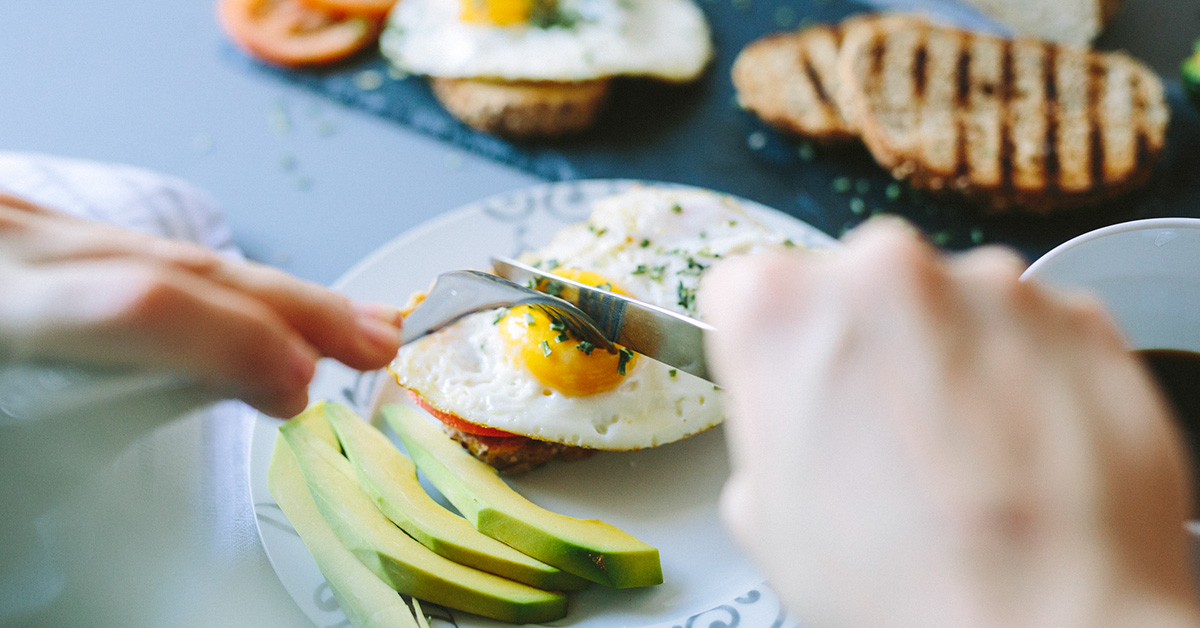Can you reverse prediabetes with diet?
Prediabetes occurs when your blood sugar is higher than what’s considered normal, but not high enough to be type 2 diabetes. A healthy diet is essential to reversing prediabetes.
There are no foods, herbs, drinks, or supplements that lower blood sugar. Only medication and exercise can.
But there are things you can eat and drink that have a low Glycemic Index (GI). This means these foods won’t raise your blood sugar and may help you avoid a blood sugar spike. In addition to diet changes, staying or becoming active is also important.
Learn which foods you can add to your diet plan. You may be able to prevent prediabetes or type 2 diabetes by adding more of these foods, spices, and drinks into your diet. Eat them as healthy alternatives to sugar, high GI carbohydrates, or other treats.
Want more info like this? Sign up for our diabetes newsletter and get resources delivered right into your inbox.
Avocados
Polyunsaturated fatty acids (PUFAs) and monounsaturated fatty acids (MUFAs) are important components of a healthy blood sugar eating plan. They can improve insulin sensitivity. They can also help increase feelings of satiety, and have a healthy impact on blood pressure and inflammation. MUFAs are a key nutrient in avocados.
Studies have shown avocados can lower the risk of metabolic syndrome. This is a group of risk factors that can increase the risk of diabetes. It can also raise the risk of blood vessel disease like heart disease and stroke.
Avocados also have a low GI. For a unique, diabetes-friendly dessert, try making Oh She Glow’s natural, no sugar added, raw avocado chocolate pudding.
Tuna, halibut, and fish with omega-3 fatty acids
Protein helps the body maintain and repair itself. Since protein doesn’t impact blood sugar levels, it doesn’t have a GI ranking and won’t raise blood sugar levels. Protein also increases satiety, so relying on protein to feel full instead of bread, rice, or pasta may be a good way to manage your blood sugar.
Fish is a great source of protein. It’s low in unhealthy fats and a good source of omega-3 fatty acids. Good options include:
- salmon
- trout
- albacore tuna
- mackerel
- halibut
Fish is also quick and easy to prepare. Season a filet with salt, pepper, and lemon and put it into an oven at 425°F (218°C). Bake for 20 minutes until the flesh is flaky.
Garlic
Garlic has potential to help manage blood sugar. Reports show garlic intake can lower fasting blood glucose, which is your blood sugar level when you haven’t eaten. Similar studies also suggest that onions have positive effects on blood sugar levels.
Garlic doesn’t have a GI ranking since it doesn’t have carbohydrates and won’t increase blood sugar levels. Add more garlic into your meals by trying this delicious garlic spread by An Edible Mosaic. It can last for a week and replace butter or salad dressing.
Sour cherries
While all fruits can raise blood sugar levels, some have a lower GI score — like sour cherries. Sour cherries have a chemical called anthocyanins. Studies have produced experimental evidence that anthocyanins may protect against diabetes and obesity.
If you’re a fan of fruits, try eating more sour cherries instead of bananas, pears, and apples.
If you’re planning dessert, skip the peach cobbler and try this paleo, no-added-sugar cherry crisp by I Breathe, I’m Hungry. Be sure to use sour cherries since regular cherries have a moderate to high GI score.
Apple cider vinegar
The acetic acid in apple cider vinegar reduces certain enzymes in the stomach. One study reported that apple cider vinegar can improve insulin sensitivity after meals.
Try drinking 20 grams of apple cider vinegar in 40 grams of water before you eat to help reduce a spike in blood sugar. Find a great selection of apple cider vinegar here.
Leafy greens like spinach, kale, and chard
Leafy greens are high in fiber and nutrients like magnesium and vitamin A. These nutrients can help to lower blood sugar. Leafy greens to add to your diet include:
- spinach
- lettuce
- collards
- turnip greens
- kale
- Swiss chard
Eating 1.35 servings instead of .2 servings of leafy greens per day is associated with a 14 percent reduction of risk for developing type 2 diabetes.
All leafy greens have a low GI. Spinach even has a GI ranking of less than 1 per 1 cup. Kale has an estimated GI score between 2 and 4.
To add more leafy greens into your diet try this diabetes-friendly smoothie by Tracy Russell of Incredible Smoothies.
Chia seeds
Chia seeds are beneficial and high in fiber and healthy fats, omega-3s, calcium, and antioxidants. Studies have shown that high chia seed diets can help lower LDL cholesterol and triglycerides.
Chia seeds have a GI of 1 and are a great addition to recipes. The gooey texture works great as thickener in this pudding recipe from Little Broken (skip the maple syrup). Nutrition Stripped uses chia seeds and cauliflower to make a low-carb pizza crust.
Cacao
Cacao are beanlike seeds used to make chocolatey spreads and treats like cocoa butter and chocolate. Before confectioners add sugar, it’s bitter and unsweetened, like dark chocolate.
Cacao seeds are high in antioxidants. They also contain a flavanol called epicatechin, which regulates glucose production by activating key proteins. It can help to stabilize blood sugar, even in those who already have diabetes.
Swap out the milk chocolate for dark chocolate that contains 70 percent or more cacao, and limit intake to one to two squares.
You can also use cacao nibs as toppings for your yogurt, smoothies, or desserts.
Blueberries and blackberries
Blackberries and blueberries won’t raise your blood sugar levels as much as other fruits. These berries are high in fiber and have the highest concentrations of anthocyanins. Anthocyanins inhibit certain digestive enzymes to slow down digestion. They also prevent spikes in blood sugar after eating starch-rich meals.
One study reported adding blueberry bioactive (22.5 grams) to smoothies improved insulin sensitivity in insulin resistance. The glycemic load of blueberries is 5.
Satisfy your sweet tooth with this blueberry peach chia seed parfait.
Almonds and other nuts
Almonds can help regulate and reduce rises in blood sugar after meals and prevent diabetes. One study found people who consumed 2 ounces of almonds per day had lower levels of fasting glucose and insulin. Another study found that almond consumption could increase insulin sensitivity in people with prediabetes.
The GI score for almonds is estimated to be 0. This is because small amounts of carbohydrate found in almonds and other nuts is primarily fiber.
Toast almonds with cumin to create a healthy snack, or try EatingWell’s Chinese chicken noodle salad. For the noodle salad you may want to substitute kelp (seaweed) or shirataki (yam) noodles, which have low to no carbs, for the ramen noodles.
Most nuts all have GI scores between 0 and 20, which is considered low. The nut with a higher GI score is the cashew (22). Opt for nuts like pistachios, walnuts, and macadamias instead of crackers and other snacks the next time you’re hungry.
Whole grains
When shopping or eating out, opt for whole grains (like millet or quinoa) instead of refined grains. Refined grains are high in carbohydrates and can cause spikes. Whole grains have higher amounts of fiber, phytochemicals, and nutrients, and can help to regulate blood sugar.
A study published in The American Journal of Clinical Nutrition found that whole grain consumption benefited insulin sensitivity. Fasting insulin rates were 10 percent lower after consumption.
Whole-grain bread has a GI score of 51, and whole-grain pasta has a GI score of 42.
Eggs
Eggs are one of those foods that got a bad name because they contain a higher amount of cholesterol. But eating eggs doesn’t seem to hurt those with prediabetes. It’s also believed that dietary cholesterol isn’t as important, at least for those who don’t have type 2 diabetes.
Like all pure protein sources, eggs have a GI score of 0. Eggs can also increase fullness and reduce cravings. But what you add to eggs can counteract their health benefits.
It’s safe for healthy people, unless a doctor has advised otherwise, to consume eggs moderately, but hardboiled eggs may work as a satisfying snack or quick breakfast.
Coffee
There’s a study suggesting that increasing your coffee (caffeinated and decaffeinated) intake by one cup a day may lower your risk of type 2 diabetes by more than 10 percent. But what you add to the coffee matters too. Avoid adding too much sugar, syrups, and milk to your coffee.
The bottom line
To prevent diabetes and prediabetes through your diet, avoid foods that have a high GI score. Also lower the amount of total carbohydrates and sugar that you consume. Low GI foods are foods that have a score of 55 or less.
There are several apps that make it easier to spot healthier eating choices. You can use these apps to check the carbohydrate and sugar content of foods. This can help you avoid spikes or intake of sugar and carbohydrates. These apps include:
- Daily Carb – Nutrition Counter and Glucose Tracker
- MyNetDiary Calorie Counter PRO
- Carb Counting with Lenny
The most important way to avoid the onset of diabetes if you’re insulin resistant is to lose weight, exercise, and eat a balanced, whole-foods diet. No single method, food, or workout will take the place of the long-term benefits of a healthy diet.





